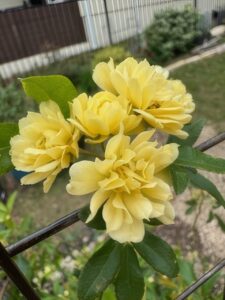How to Grow Burford Holly in Winter: A Complete Guide
Burford holly (Ilex cornuta ‘Burfordii’), known for its dense, glossy leaves and bright red berries, is a hardy evergreen shrub that can add beauty to your garden year-round. As winter approaches, it’s important to give your Burford holly the right care to ensure it thrives during the colder months. Here’s a comprehensive guide on growing Burford holly in winter.
1. Understanding Burford Holly: An Overview
Burford holly is a popular variety of Chinese holly known for its ornamental appeal. Its dark green, leathery leaves contrast beautifully with clusters of bright red berries, which persist throughout winter, adding a pop of color to your landscapes.
Key Features:
- Evergreen: Retains its leaves year-round.
- Cold Hardiness: Thrives in USDA hardiness zones 7–9. Though there is a mention of growing well in zone 10.
- Low Maintenance: Resistant to pests and diseases.
- Size: Can grow up to 10–15 feet tall and wide, though dwarf varieties are available.
2. Preparing Burford Holly for Winter
While Burford holly is relatively cold-hardy, it still benefits from proper preparation before the frost sets in. Here are some key steps to take before winter.
Mulching
One of the most important tasks in preparing Burford holly for winter is mulching. Apply a 2- to 4-inch layer of organic mulch (like pine straw, bark, or compost) around the base of the shrub. This helps insulate the roots and retain moisture during cold, dry spells.
Watering
Although Burford holly is drought-tolerant, it’s essential to water it thoroughly before the first hard frost. Well-hydrated roots are more resistant to cold damage. Keep watering during the winter if there are prolonged dry spells, especially in the absence of rainfall.
Pruning
Winter is generally a good time to prune holly shrubs, but for Burford holly, you should hold off heavy pruning until early spring. If necessary, remove dead or diseased branches before winter to maintain its shape and health.
3. Winter Care Tips for Burford Holly
Once winter sets in, ongoing care is minimal, but a few simple tasks can make a big difference.
Protecting Against Frost and Snow Damage
In areas prone to heavy snow or ice storms, the weight of snow can damage branches. If snow accumulates on your holly, gently brush it off with a broom rather than letting it sit and freeze, which could lead to broken branches.
Dealing with Cold Winds
While Burford holly is fairly wind-resistant, cold, drying winds can sometimes cause leaf burn, particularly if the plant is exposed to intense winter sun. You can wrap the shrub in burlap or erect a wind barrier if you’re in a particularly windy area.
Fertilizing
Fertilizing Burford holly during winter is not necessary. You can apply a balanced fertilizer in early spring as the plant begins its growing season.
4. Common Issues in Winter and How to Address Them
Winter Burn
One of the most common issues with Burford holly in winter is winter burn, which occurs when moisture is lost from the leaves faster than it can be replaced. This usually happens during windy or sunny periods, even when the ground is frozen. You can prevent winter burn by ensuring the shrub is well-watered before the first freeze and by applying an anti-desiccant spray to help lock in moisture.
Pest and Disease Control
Winter is generally a dormant period for most pests, but be on the lookout for scale insects, which can sometimes survive the colder months. A horticultural oil spray in early winter can help keep these pests at bay. As for diseases, Burford holly is relatively resistant, but if you notice black spots or discolored leaves, it could be a sign of fungal infection. Prune away affected areas and consider applying a fungicide if needed.
5. Enjoying Burford Holly’s Winter Beauty
One of the greatest joys of growing Burford holly is the visual interest it brings to a winter garden. Its red berries attract birds and wildlife, providing a food source when other options are scarce. You can also clip branches with berries for holiday decorations, wreaths, or winter floral arrangements, bringing the beauty of your garden indoors.
Burford holly is a resilient, beautiful shrub that can thrive even in winter with proper care. From mulching and watering to protecting against cold winds, a little attention goes a long way toward ensuring your Burford holly remains healthy and vibrant throughout the colder months. With its glossy leaves and bright berries, your garden will continue to be a winter wonderland, making Burford holly a perfect choice for year-round interest.
Welcome Fall!!!
A time of hot chocolatey mornings, and toasty marshmallow evenings, and, best of all, leaping into leaves.”
A.A. Milne,
Winnie the Pooh
Reference
- “Texas Gardening the Natural Way” by Howard Garrett, the Dirt Doctor Pg. 114
- “The Southern Living Garden Book”. Pub. Oxmoor House 1998. Pg. 254
- Online: Texas Tech University Plant Resources: “Dwarf Burford Holly
- Online: Neil Sperry’s Gardens. “A Most Popular Holly”
- Online: University of Florida. “Ilex Cornet ‘Burfordii’ (Burford Holly)







